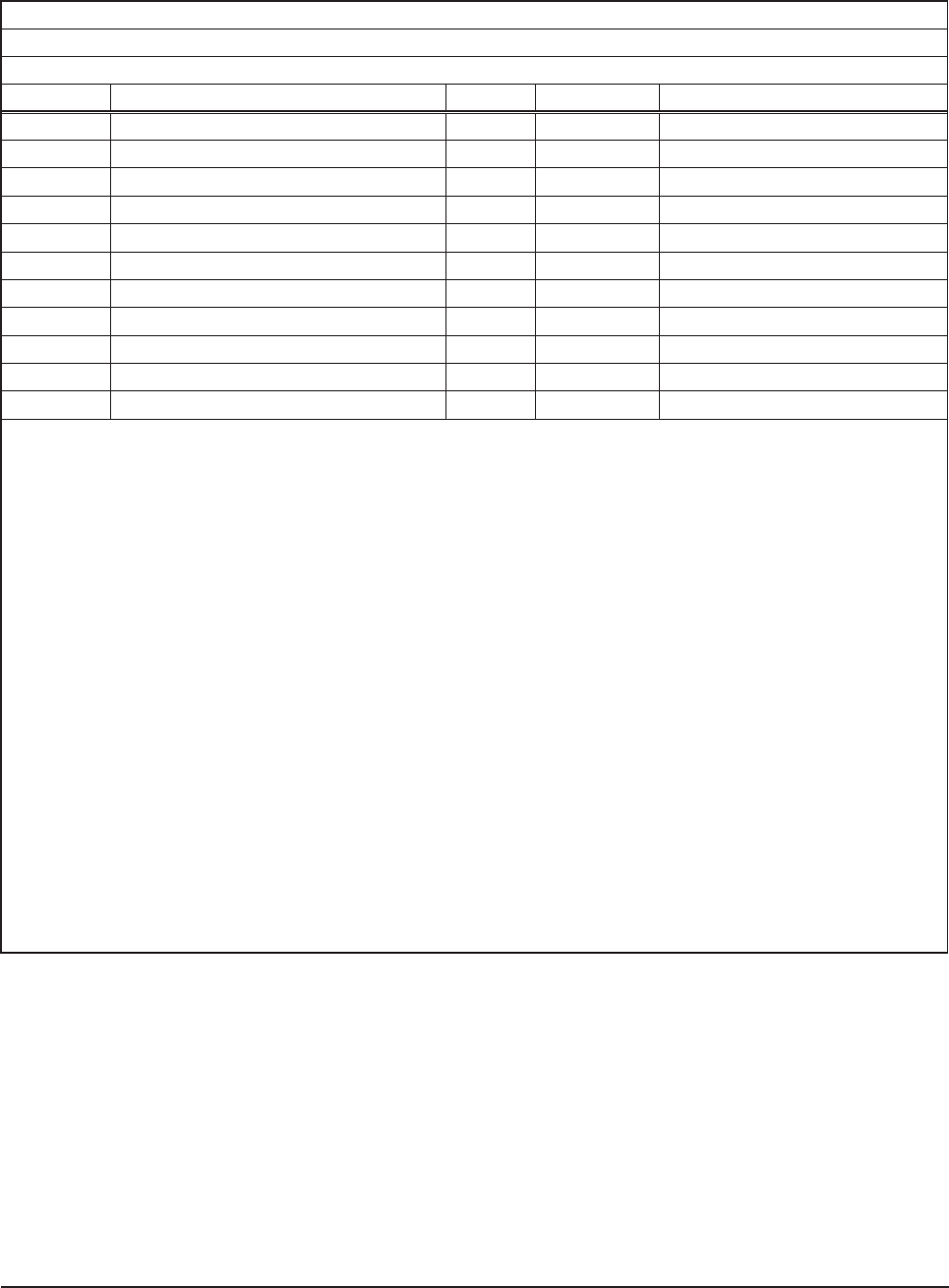
30
MN002000A © 2004 Navman NZ Ltd. All rights reserved. Proprietary information and specifications subject to change without notice.
Message ID: 1136
Rate: variable
Message length: 18 words
Word No. Name Type Units Range
1-4 Message header
5 Header checksum
6-7 Set time (Note 1) UDI 10 ms ticks 0 to 42 94 967 295
8 Sequence number (Note 2) I 0 to 32 767
9.0 Device not present Bit 1 = not present
9.1-9.15 Reserved
10-11 Almanac failure (Note 3) Bit
12-13 Failure (Note 4) Bit 0 to 31
14-15 Almanac status (Note 3) Bit
16-17 Status (Note 4) Bit 0 to 31
18 Data checksum
Note 1: Set time is an internal 10 millisecond (T10) count since power-on initialisation enabled the processor
interrupts. It is not used to derive GPS time, but only serves to provide a sequence of events knowledge. The set time
or T10 count references the receiver’s internal time at which the message was created for output. The T10 range is
approximately 71 weeks.
Note 2: The sequence number is a count that indicates whether the data in a particular binary message has been
updated or changed since the last message output.
Note 3: The Almanac Failure and Almanac Status words are 32-bit bit maps where the LSB = PRN 1 and the MSB =
PRN 32.
Note 4: The ‘failure’ and ‘status’ words are bit maps with values as follows:
0 = status 16 = DGPS control
1 = position 17= host port protocol selection
2 = UTC/lono 18 = auxiliary port protocol selection
3 = frequency standard cubic parameters 19 = host port enabled messages
4 = host port communication configuration 20 = reserved (auxiliary port enabled messages)
5 = auxiliary port communication configuration 21 = user datums
6 = memory options 22 = frequency/temperature table
7 = solution validity criteria 23 = reserved
8 = power management selections 24 = frequency standard calibration data
9 = selected datum 25 = nav configuration data
10 = platform class 26 = DR navigation parameters
11 = cold start control 27 = gyro temperature table
12 = elevation mask angle 28 = reserved
13 = satellite candidate list 29 = reserved
14 = antenna selection 30 = reserved
15 = user entered altitude 31 = data is being updated
Table 3-19 Message 1136 (EEPROM status)
3.5.1.15 Message 1136 (EEPROM status)
This message provides failure and storage status
information for the EEPROM. Bits set in the failure
words represent write failures during attempts to
update the corresponding blocks of data. Bits set
in the status words indicate that those data blocks
have been updated at least once in the EEPROM.
The contents of the ‘EEPROM status’ message are
described in Table 3-19.


















